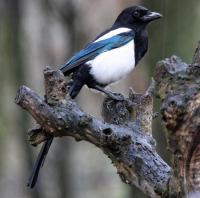- Home
- FAQs
- Customer Video Gallery
- Customer Photo Gallery
- Bird Facts
- Bird Food Blog
- Bird Information
- Feeding Advice
- Small Animal Information
- A to Z of Guinea Pigs
- A to Z of Hamsters
- A to Z of Rabbits
- Basic Care for Guinea Pigs
- Basic Care for Hamsters
- Basic Care for Rabbits
- Basic care for Chinchillas
- Basic care for Ferrets
- Basic care for Gerbils
- Basic care for Mice
- Basic care for Rats
- Buying a Healthy Small Animal
- Does your Reptile need a Licence
- Equipment for Ferrets
- Equipment for Hamsters
- Equipment for Mice
- Equipment for your Chinchilla
- Equipment for your Gerbil
- Equipment for your Guinea Pig
- Equipment for your Rabbit
- Keeping a House Rabbit
- Dog Information
- Cat Information
- Customer Information
- Fat Balls
- Suet Pellets
- Straights
- Seed Mixes
- Suet Treats
- Mealworms
- Bird Feeders
- My Account
Birds Skeleton
In order to possess the ability to fly birds need their weight to be as low as possible and one way they achieve this is by having a light, rigid skeleton. Birds skeletal structure consists of fewer bones, in comparison to mammals or reptiles, with some smaller bones fused together to form one bone and other bones discarded altogether. Their bones are also very lightweight, many of them having air spaces within or even completely hollow. Hollow bones are strengthened by an internal support system of struts.

Birds have also evolved without teeth and so do not require the strong and heavy jaws to support them. Their wings and legs still share the same basic parts as our own limbs, but are significantly modified. As an example whilst humans have 29 bones in our arm and hand, the pigeon only has 11.
In a bird skeleton, what would be the 1st and 5th fingers are no longer present, and the 2nd and 3rd are fused. The primary feathers are supported by the phalanges of the 3rd and 4th digits.
Of particular note is the sternum, or breastbone, which is highly modified, displaying a keel like shape. The large surface area afforded by this is ideal for the attachment of the flight muscles.
The rib cage in birds is highly adapted in that the ribs extend from the back to the sternum and each rib has a small bone connecting it to the next rib. This part of the skeletal system is known as uncinate, provides a rigid support system for muscles and only birds possess such a skeletal feature.

Birds have also evolved without teeth and so do not require the strong and heavy jaws to support them. Their wings and legs still share the same basic parts as our own limbs, but are significantly modified. As an example whilst humans have 29 bones in our arm and hand, the pigeon only has 11.
In a bird skeleton, what would be the 1st and 5th fingers are no longer present, and the 2nd and 3rd are fused. The primary feathers are supported by the phalanges of the 3rd and 4th digits.
Of particular note is the sternum, or breastbone, which is highly modified, displaying a keel like shape. The large surface area afforded by this is ideal for the attachment of the flight muscles.
The rib cage in birds is highly adapted in that the ribs extend from the back to the sternum and each rib has a small bone connecting it to the next rib. This part of the skeletal system is known as uncinate, provides a rigid support system for muscles and only birds possess such a skeletal feature.




